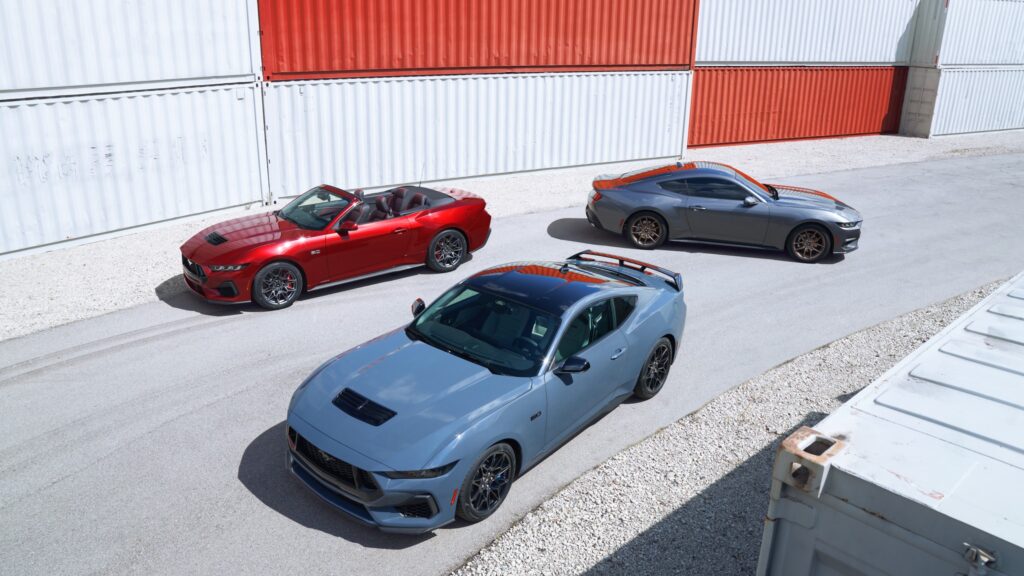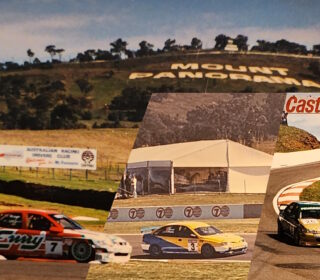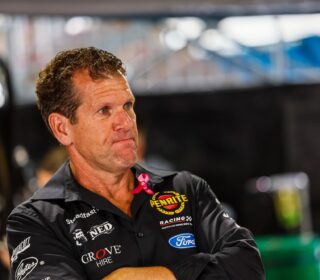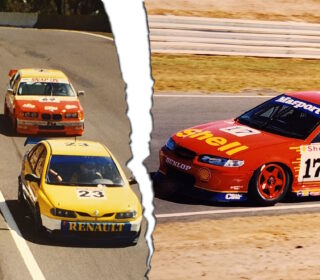Motorsport’s New Swiss Army Knife
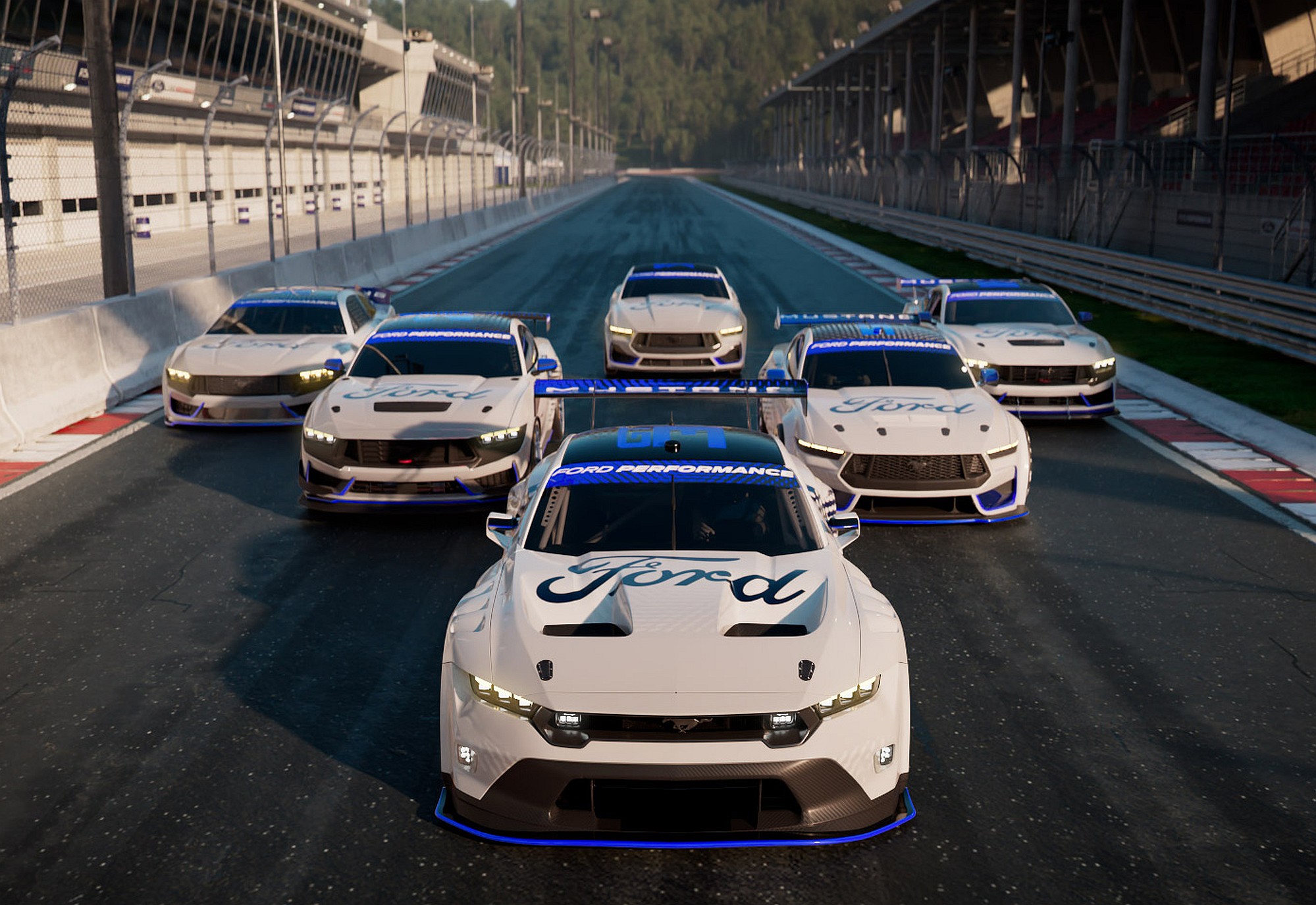
As car companies around the world pivot to SUVs and pickup trucks, Ford remains a mainstream manufacturer with a practical hero car, that remains accessible to the masses. And with the launch this week of the seventh generation Mustang, Ford Performance is looking to double down on its commitment to a massive array of motorsport genres around the globe.
Sure, Toyota’s 86, Mazda’s MX-5 and Chevrolet’s Camaro, amongst others, all have a competitive presence, but none have the broad, one-shape-fits-all, multi-purpose application of the Mustang.
Ford isn’t shy of taking on the challenge of motorsport, take for instance the World Rally Championship with its hybrid-powered Puma, or off-roading with wild adaptations of the F-150 Raptor.
Now with the Mustang, the company takes an already popular model line and adapts it for multiple rulesets, all with factory blessing.
Here we delve into the uses across the board for the latest spec-‘Stang.
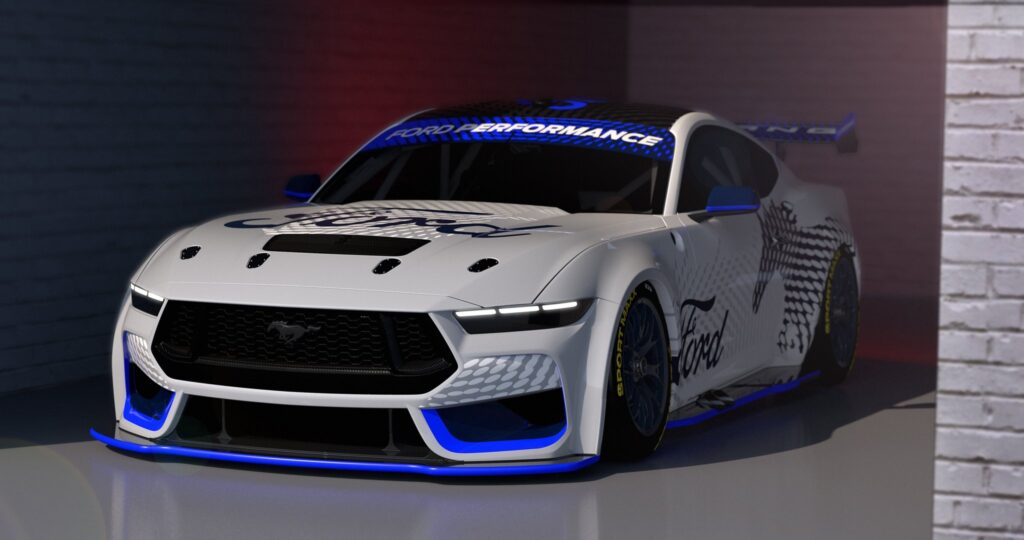
Locally
At the centrepiece of the latest iteration of the pony car Downunder is its Supercars program.
To date, all of the work carried out testing the Blue Oval’s Gen3 racer has been undertaken by the previous S550 model Mustang, as launched last December at the Bathurst 1000.
The 2023 season is also significant for the marque, with it making its most substantial contribution to the grid in recent years.
With the welcoming of Walkinshaw Andretti United into the Ford fold, 11 of the 25 full-season entries are set to be Mustangs, rebounding from a low of only five cars in 2015.
There were 12 full-time Fords running in 2009, and 11 in ’12, although the overall grid sizes then were larger. You have to go back to around the turn of the century for big numbers from the Ford camp.
From the car’s on-track debut at the upcoming Bathurst 1000, the first worldwide appearance of the new shape on a racetrack, the package will face a busy time, with official aerodynamic parity testing ahead of its championship debut at the Newcastle 500 on March 10-12, 2023, before the new look road going car hits the showroom floors later next year.
Importantly, the new Gen3 regulations more closely resemble the silhouette of the coupe-based Mustang and Chev Camaro, rather than the baseline of four-door family cars set by earlier Falcons and Commodores, which distorted the roofline of the current generation Ford Supercar.
It is also notable that Ford has announced the re-formation of a local motorsport program management team, a further indication of the brand’s increased support for backed outfits.
From a Supercars perspective, having the category feature prominently in this global announcement is a sign of the sport’s significant international standing.
Whatever comes next for the nameplate in Australia, it has some considerable shoes to fill.
From the earliest muscle car days of Australian touring car competition, Mustang was at the forefront, with big-time on-track success adding to the legendary status of the initial two generations of the car.
From Norm Beechey claiming the 1965 ATCC title, through to Pete Geoghegan being successful in four straight championships up to 1969, and Allan Moffat’s legendary ’69 Trans-Am being victorious in a whopping 101 races from 150 race starts, the Mustang was core to some of the sport’s biggest moments.
The model reappeared on the local scene in the mid-1980s thanks to the German Zakspeed-produced Group A Fox model Mustang, which primarily acted as a stopgap for Dick Johnson until the Ford Sierra came on stream in 1987.
The most recent Mustang GT model hit the track at the start of 2019, where it came out on top from its initial two attempts at the Supercars Driver’s Championship with Scott McLaughlin, the Team’s Championship with Shell V-Power Racing, plus the overall Manufacturers title, while McLaughlin and Alex Premat also won the 2019 Bathurst 1000.
Another local focus for Mustang is on production car racing, where the car has been growing in popularity as a weapon of choice.
Ford in Australia has announced that the specialist limited edition Dark Horse version will be made available locally, although the specs of the model and production run details, which are key in formulating prod car eligibility, have yet to be revealed.
Ford is also making a Dark Horse line that is dedicated to track use – more on that is below, but they are not expected in right-hand drive from the factory.
One prospect on the drawing board is a spec series for the Dark Horse R, similar to the Toyota 86 Race Series, if suitable backers can be put in place.
Elsewhere, the later model Mustang has been a motorsporting Swiss Army knife, with the body a popular pick in local Trans-Am and TA2 competition, as utilised by the MARC Cars inspired racer, plus in full blown-Trans-Am spec cars utilised in Sports Sedan competition, in addition to early generation iron utilised in historic Group N and S racing.
Another area where we could potentially see the latest generation Mustang race on these shores is in sportscar racing, with the launch outlining further details of its all-encompassing program…
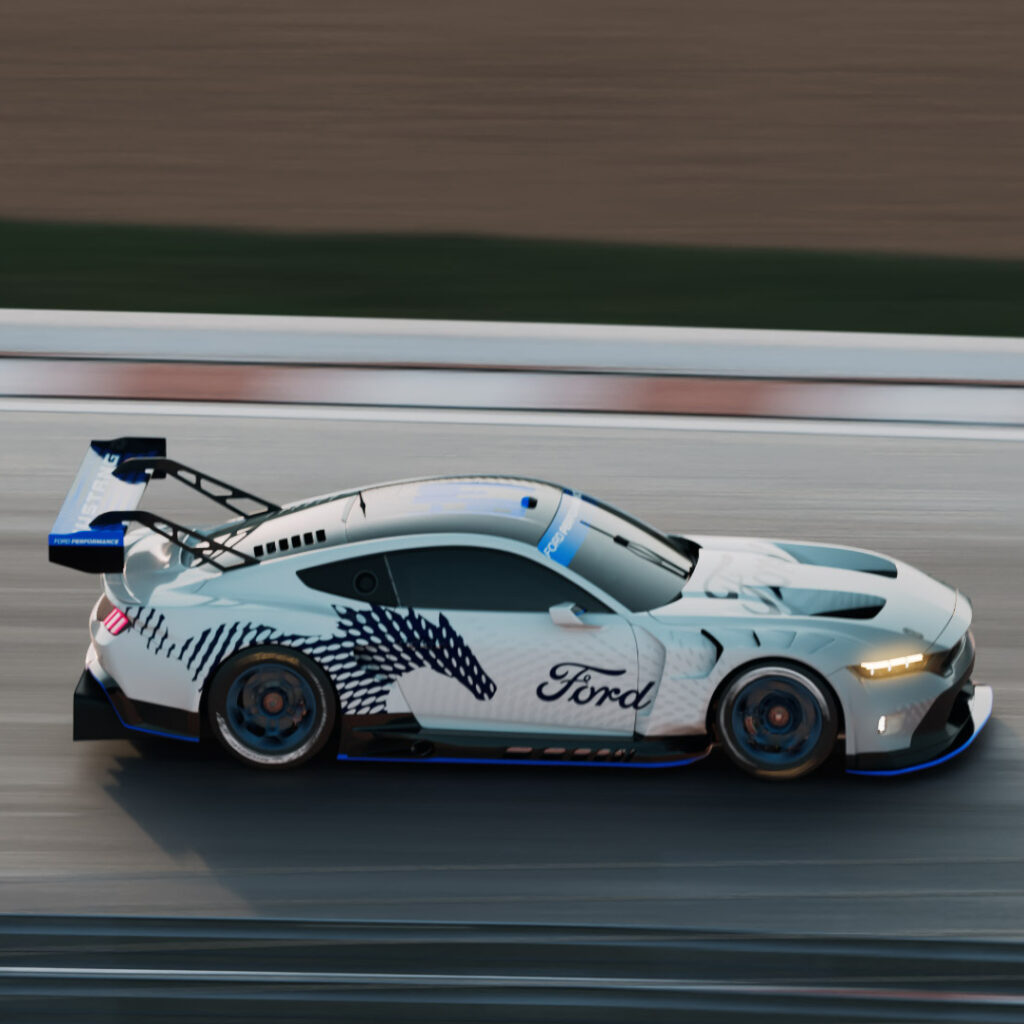
Global GT
While it had already been announced that Ford was diving back into GT racing, the Mustang unveil put more meat to the bones of the program.
Set for a 2024 debut after a late 2023 homologation run, the new S650 Mustang model is coming to GT3 specifications, which has worldwide implications, from the World Endurance Championship to IMSA and GT Challenge Australia, with key events earmarked including Le Mans, Daytona and our own Bathurst 12 Hour.
In conjunction with development partner Multimatic, work on the platform is well advanced, and follows in the footsteps of the former Ford GT program, another partnership between the companies that saw the Chip Ganassi run cars claim ten IMSA race wins and six WEC victories between 2016 – ’19.
The first-generation GT was also adapted for GT3 use by Swiss outfit Matech Concepts late last decade.
For the new GT3-spec program, M-Sport is noted to be developing the V8 from the Mustang GT passenger car for the project, a similar architecture that is being adapted for Supercars use.
The company meanwhile also has the new Mustang under development for GT4 specs, with the car to launch for use in SRO, FIA and IMSA use next year.
The current iteration of the Mustang GT4 has been seen on these shores previously, most notably when it was piloted by Tony D’Alberto in speed comparisons at the 2018 Bathurst 1000.
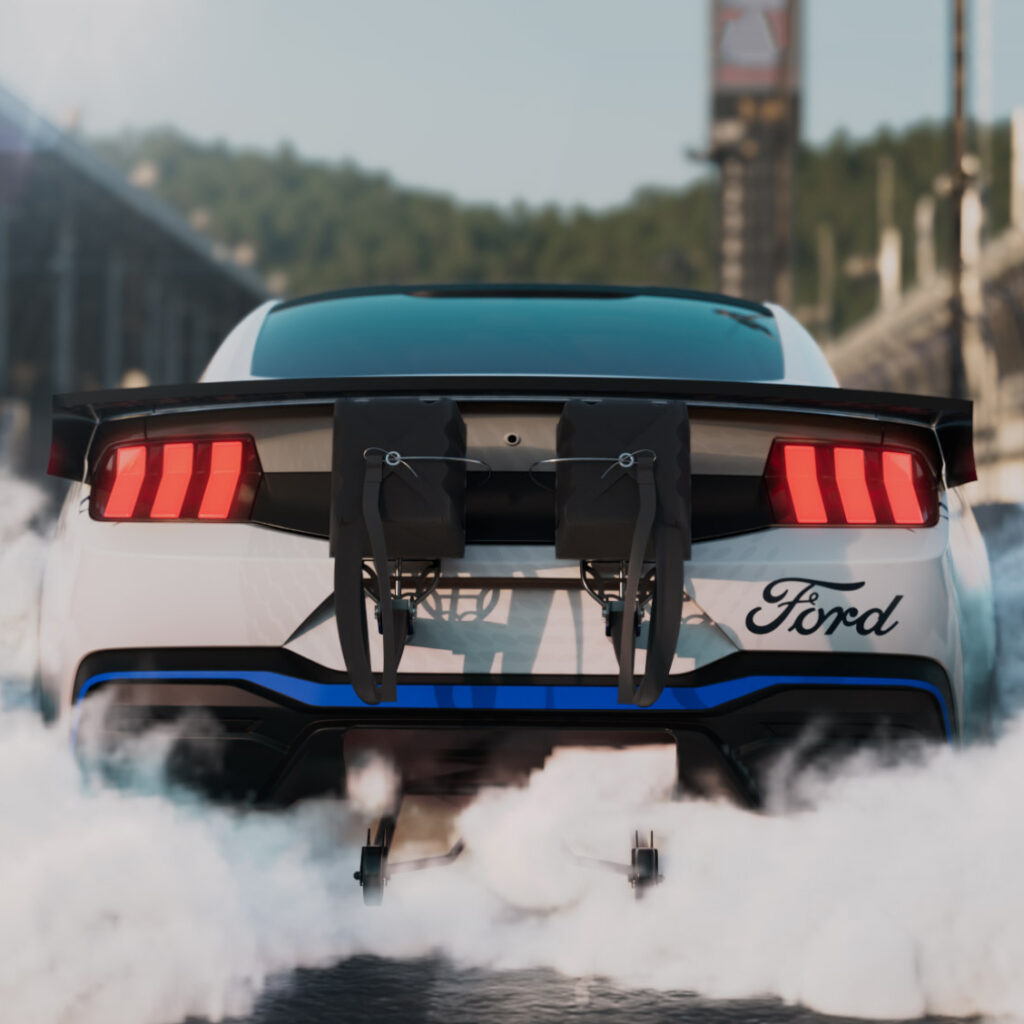
Stateside
The Mustang is Ford’s shape of choice for its NASCAR Cup Series program, with new styling cues set to be applied to the Next Gen rules at an as-to-be-announced date.
One of the big changes for the latest NASCAR platform, which debuted this season, is that machines take more cues from the road-going donor cars, giving manufacturers much more DNA in the program, over the former COT one-shape-fits-all body.
For Ford, it also gives the brand the opportunity to re-homologate its package, key with the manufacturer now having a solid understanding of the requirements of the platform.
Meanwhile, the brand has been a fixture in top-level US drifting with the Mustang in recent times, although this latest announcement didn’t detail the discipline as one of its core focuses.
Elsewhere, Ford will have the Mustang prepared for the NHRA-sanctioned Factory X division, which is a gap filler between the Factory Stock Showdown and Pro Stock divisions.
Ford’s top-line drag racing involvement in the Nitro Funny Cars is purely a sticker treatment, rather than a road-bred derived platform.
In essence, the factory presence is a return to Mustang’s hot-rodding roots, where big banging specials like the 428 Cobra Jet from the late 1960’s became a popular pick for quarter-mile use.
In more specialised configuration for road racers, Ford is also releasing the Dark Horse S and R variants, which come fully prepared for enthusiasts and grassroots track use.
In top spec, the packages available will be stripped out and delivered with a full suite of sporting and safety gear, targeted at SCCA-level racing.
The next challenge will be for Hertz to pick up the baton and revive the legendary Rent-a-Racers program.
The original concept from 1966 saw 1,001 Shelby GT350s available for only $17 a day, plus 17 cents a mile, with the fleet often taking to drag meets or utilised in SCCA production car races.
Could you imagine that today…
